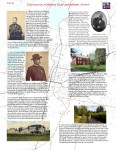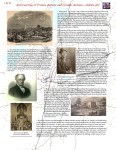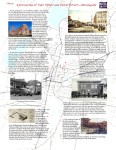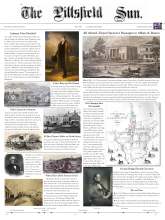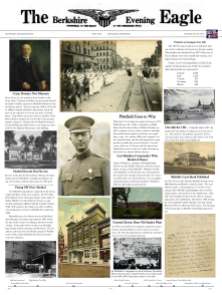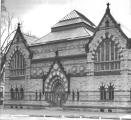This month marks the second inaugural for President Obama. It’s also the fourth anniversary of his executive order requiring the closing of the detention center at Guantánamo within one year. That decision prompted a group of museum professionals and activists to launch a month later the Guantánamo Public Memory Project (GPMP), aimed at preserving the site for historical purposes, and thereby preventing it from being used again as a detention center.
In December, the GPMP hosted a conference in New York City in connection with the opening of an exhibit to explore the issues that the naval base and the prison hold for the U.S., and its place in the world. The exhibit consists of a series of panels in the windows of the Kimmel Center at NYU and an online collection of materials and interviews, collected by the project and its many partner institutions. Much transpired at the conference, including testimonials by Cuban and Haitian refugees from the 1990s, from military officers and lawyers, from historians and students. Most striking, and telling, were two questions posed by students.
The first student, let’s call Jose, stood up in front of the room of 100 people attending the conference to ask his question, stating that he was from the Dominican Republic, and while not enrolled in university, he was studying on his own. He said that where he was from and throughout all of Latin America, the United States stood like “a beacon” on issues of democracy and human rights. “What,” he asked, “happens now after Guantánamo? What can you say to us anymore?” His tone was clearly one of wanting to continue to see the U.S. as that beacon, in a region still struggling with consolidating its own democracies.
Several minutes later, another student called Katie asked what was happening to the lighthouse at Guantánamo Naval Base. “Were there any restoration plans?”
The former naval commander in charge of facilities on the base indicated that the lighthouse was in disrepair, that pieces were falling off it, and that there was no funding to restore or maintain it. In fact, it was closed off, surrounded by chain link fence.
The two questions were asked separately, but became connected metaphorically, since the second student had contributed to the GPMP on-line exhibit a page on the lighthouse, in which she referred to it as “a beacon.”
The physical disrepair of that lighthouse on Guantánamo takes on greater meaning in light of Jose’s question. The symbol of the U.S. as a beacon takes the form of the lighthouse on the naval base, damaged and surrounded by a fence.
The only answer to Jose and people around the region should be, watch our democratic practices take place to find the self-correcting mechanisms. It will take time, and there will be advances and setbacks. The conference and the Guantánamo Public Memory Project are part of that process by seeking
a) to raise awareness about the base and the detention center,
b) to use public history through exhibits, digital spaces and oral history to initiate a dialogue about the trade-offs between national security and human rights and
c) to re-think the use of Guantánamo as a detention center in the future.
For more information on the project, go to: http://hrcolumbia.org/Guantánamo/ . To see the final product go to: http://gitmomemory.org/stories/.
















